Understanding travel risk
management ownership.
By: Ray Rackham
February 16, 2024
This article is part of a series of resources focusing on Travel Risk Management, including blogposts, e-books, webinars, and podcasts. These resources have been created by CIBT in association with GBTA, following the publication of a December 2023 study entitled Travel Risk Management (TRM) in a Post-COVID World. Download the full report here.
Based on the findings in our report with GBTA, 'Travel Risk Management in a Post-COVID World,' it's evident that the landscape of Travel Risk Management (TRM) has undergone significant transformation, particularly in the wake of the COVID-19 pandemic. At CIBT we recognize the evolving challenges and responsibilities that travel and mobility managers face in today's corporate world. This article delves into the levels of ownership of TRM-related functions within travel programs, shedding light on which aspects are most likely to be managed internally.
Post-COVID prioritization of TRM
The pandemic has undeniably brought TRM more into the spotlight. The report highlights that 52% of travel managers acknowledge TRM as a higher priority now than pre-COVID. This shift is more pronounced in larger corporations, where the need for a comprehensive and well-structured TRM program is paramount due to their extensive global presence and higher number of corporate travelers. Despite this heightened priority, it's interesting to note that TRM budgets have largely remained flat, and any increase in resources is more evident in terms of stakeholder hours rather than financial investment.
Ownership of TRM functions
A critical observation from the report is that travel programs typically do not 'own' TRM in its entirety. However, there are specific TRM functions where the ownership tends to reside within the travel department. While these functions are more likely to be managed by travel programs, it's crucial to recognize that ownership does not equate to exclusivity in responsibility. Collaboration with other departments such as HR, legal, and compliance is often necessary to ensure a holistic and effective TRM strategy.
1. Pre-trip Approvals
This function primarily involves evaluating and approving travel plans based on a comprehensive understanding of the destination's risk profile and the company's risk tolerance. The travel department, by owning this function, becomes a gatekeeper, ensuring that all travel aligns with the company's safety protocols and business objectives.
While the travel department may lead this process, it's essential that they work in tandem with security, risk management, and other relevant departments to incorporate a wide array of risk assessments and insights, ensuring a well-rounded approval process.
2. Business-as-usual risk communication
Regular communication about travel risks, policy updates, and advisories is crucial in maintaining a well-informed traveler base. This function ensures that all travelers are aware of potential risks, understand how to mitigate them, and are familiar with the company's travel policies.
The efficacy of risk communication is significantly enhanced when the travel department collaborates with the communications, HR, and security departments. This synergy ensures that messages are clear and comprehensive, and reach the intended audience promptly and effectively.
3. Passport/Visa processing
Managing the intricacies of passport and visa requirements is a substantial responsibility. This function ensures that all travelers have the necessary documentation to travel, which is crucial for maintaining compliance with international travel regulations.
Despite being a function typically owned by travel departments, passport and visa processing is often riddled with complexities and is prone to inefficiencies. Enhancing collaboration with specialized external partners like CIBT can streamline this process, ensuring faster, more reliable, and compliant outcomes.
4. Incident response and support
While not exclusively owned by travel departments, their role in the immediate response to incidents during travel is critical. This function involves coordinating support for travelers in emergencies, ensuring they have access to immediate assistance, and communicating with all relevant stakeholders.
Effective incident response requires a coordinated effort between the travel department, security teams, local authorities, and external assistance providers. The travel department often acts as the central communication hub, ensuring that all parties are informed and that the response is swift and effective.
Challenges and considerations
Despite the ownership of certain functions, the report also sheds light on areas where improvement is needed. Passport and visa processing, for instance, remains a predominantly manual and challenging process for many organizations. The responsibility of ensuring visa compliance often lies with departments other than travel, indicating a need for more integrated and efficient processes.
In conclusion, while travel programs within organizations are pivotal in managing specific TRM-related functions, the landscape of TRM is intricate and requires a multifaceted approach. As travel and mobility managers navigate this complex environment, it's essential to foster collaboration across various departments and leverage expertise from specialized partners like CIBT. By doing so, companies can ensure a robust TRM strategy that addresses the evolving risks and challenges in the post-COVID era of corporate travel.
Travel well-informed with CIBTvisas
An experienced visa specialist can help you navigate the complexities of border crossing requirements. Contact CIBTvisas for a quote today.
CIBTvisas Monthly Update
Get the CIBTvisas Monthly Update for the most recent information on travel requirements and consular closings.
